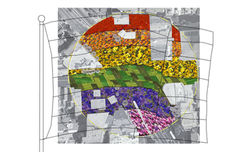
FEASIBILITY STUDIES, CONCEPT DESIGNS
& UNBUILT PROJECTS
 |  |  |
|---|---|---|
 |  |  |
 |
Creative Montessori Learning Center
As part of an investigation on whether the Creative Montessori Learning Center should move their daycare, SMA developed build-out concepts to improve the existing buildings, which had been built to minimum specs. A wrap-around porch was developed into a significant in-between zone, separating the indoor learning from outdoor learning. The porch provides a shaded play and rest space for the children on hot summer days. Classrooms can be extended to the outdoors in all weather conditions, deepening the child's awareness of the surrounding environment. The narrower south porch and the deeper east porch provide different light quality at different times of the day. In addtition, the east porch contains picnic tables, allowing children to enjoy meals outside in good weather.
“The children are inspired with a feeling for nature, which is maintained by the marvels of creation.” - M. Montessori
Richmond Library Concept Design
This four-day event at the Richmond Branch of the San Francisco public library resulted in a schematic design for a substantial addition to this historic Carnegie library. Prior to the workshop, we developed four concepts that fulfilled the program as developed through the research phase. Thus any of these four concepts could go forward as a viable schematic design. The intention of the workshop was to select by consensus the best concept, to develop it, and to present it to all stakeholders.
Ebb and Flow: Harvey Milk Memorial Plaza
San Francisco Public Prize International Design Competition Honorable Mention
The rainbow flag, a symbol of slain San Francisco supervisor Harvey Milk’s crusade for gay rights, was important to the program authors; Stoner Meek’s design proposal blankets the intersection with a grand flag of flowers that could be seen from an airplane flying over San Francisco on Harvey Milk’s birthday. A memorial also reminds us of the ebb and flow of living things, which we addressed in the very “planting” of the pavement as part of a five-day celebration each year. Afterwards, the flats would be given away to be planted in gardens all over the city in return for a donation toward next year’s installation, so the cycle could begin anew.
Living Mall: Pell Mell - Vallejo Plaza Mall, Vallejo, California
Finalist in Dead Malls Competition sponsored by LA Forum, 2003
SMA's proposal adopts the 19th century European model of the Pell Mell sporting green as inspiration for an ecological transformation of Vallejo Plaza's Dead Mall. The project includes the flooding of parking lots and demolition of two structures to create a marshland. Three new typologies are proposed to financially support the Pell Mall - the Car Mall, the Wind Malll, and the Mud Mall. Electric car dealerships lease island space in the marsh. The Car Mall can be seen from the observation deck on the roof of one of the stores along Sonoma Boulevard. The Wind Mall features family games and sprinklers with power generating windmills that generate power for the project as well as the city. At the northern end of the Pell Meadow, birds and people mingle at the edge of White Slough at the Muddy Mall.
The Other River: East River Escapes
Distinguished Entry Finalists, 1998 Prize in Public Architecture, New York, NY
Sponsored by the non-profit Van Alen Institute in New York, this international design competition for New York’s “other” river was inspired by the fact that many consider the East River to be less attractive, less interesting, and less of a development opportunity than the Hudson River. This proposal links the existing transportation network of subway stations along the river to a series of “natural events,” both existing and proposed, above ground. Intended as sites for a short vacation from the powerful pace of the commercial city, each of these seventeen “escapes” reveals a particular mood, idiosyncrasy, or recreational possibility where river and city meet.